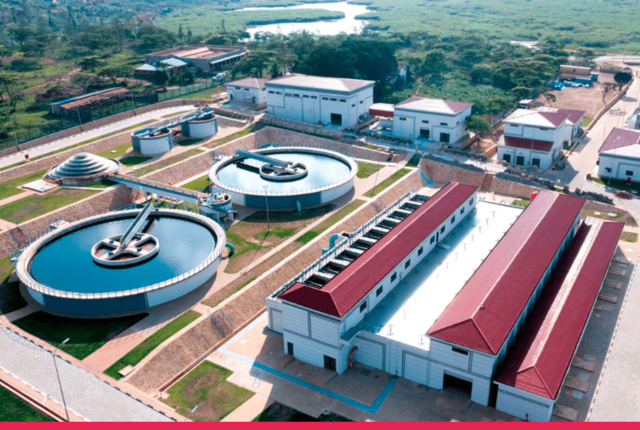
The Role of Development Finance Institutions (DFIs) in Catalyzing PPPs in Africa
Introduction
Public-Private Partnerships (PPPs) are becoming an essential mechanism for financing and delivering infrastructure projects in Africa. However, mobilizing private capital for large-scale projects can be challenging due to perceived risks, regulatory uncertainties, and financial constraints. This is where Development Finance Institutions (DFIs) step in, playing a pivotal role in bridging the gap between public infrastructure needs and private sector investment.
DFIs provide financial support, technical assistance, risk mitigation instruments, and capacity-building initiatives that enable the successful implementation of PPPs across the continent. Institutions such as the World Bank, International Finance Corporation (IFC), and the African Development Bank (AfDB) are instrumental in ensuring that African governments can attract and sustain private sector participation in critical infrastructure projects.
How DFIs Support PPPs in Africa
1. Financing Infrastructure Development
One of the primary roles of DFIs is to provide long-term financing for PPP projects. Traditional commercial lenders often shy away from African infrastructure projects due to the extended timelines and potential risks involved. DFIs offer concessional loans, equity investments, and blended finance solutions that make PPP projects more attractive to private investors.
For example, the African Development Bank’s Africa50 initiative was established to accelerate infrastructure development through innovative financing models that de-risk projects and attract private sector participation.
2. Providing Technical Assistance and Project Preparation Support
Many African governments lack the technical expertise required to structure bankable PPP deals. DFIs play a crucial role in supporting project preparation by offering advisory services, feasibility studies, and legal and regulatory guidance.
The World Bank’s Public-Private Infrastructure Advisory Facility (PPIAF) has been instrumental in helping African countries design effective PPP frameworks. Through technical assistance programs, governments can develop well-structured projects that appeal to investors.
3. Risk Mitigation and Credit Enhancement
Investors are often deterred by political, economic, and regulatory risks in African markets. DFIs help mitigate these risks through various financial instruments, including guarantees, insurance, and political risk coverage.
For instance, the Multilateral Investment Guarantee Agency (MIGA), a member of the World Bank Group, provides guarantees that protect investors against political risks such as expropriation, currency inconvertibility, and breach of contract. Similarly, the IFC’s Managed Co-Lending Portfolio Program (MCPP) offers credit enhancement solutions that make infrastructure projects more bankable.
4. Capacity Building and Institutional Strengthening
Successful PPPs require strong institutions and governance structures. DFIs invest in capacity-building programs that enhance the ability of governments to manage PPP frameworks effectively. These programs focus on regulatory improvements, contract management, and transparent procurement processes.
For example, AfDB’s African Legal Support Facility (ALSF) provides legal and financial advisory services to African governments, ensuring that they negotiate fair and sustainable PPP agreements with private investors.
5. Promoting Sustainable and Inclusive Development
Beyond financing, DFIs ensure that PPP projects align with environmental, social, and governance (ESG) standards. They require PPP projects to adhere to international best practices such as the Equator Principles and the IFC Performance Standards on Environmental and Social Sustainability.
For instance, the World Bank’s International Development Association (IDA) funds infrastructure projects that prioritize sustainability and social inclusion, ensuring that PPPs contribute to long-term economic development without harming local communities or the environment.
Case Studies of Successful DFI-Backed PPPs in Africa
1. Kenya’s Lake Turkana Wind Power Project
The Lake Turkana Wind Power Project, Africa’s largest wind farm, was developed as a PPP with financing support from AfDB, IFC, and other DFIs. The project provides over 300 MW of clean energy to Kenya’s national grid and serves as a model for renewable energy PPPs in Africa.
2. Dakar-Diamniadio Toll Road, Senegal
Senegal’s Dakar-Diamniadio Toll Road was one of West Africa’s first major PPP infrastructure projects. Backed by IFC, the project significantly reduced congestion and improved connectivity, demonstrating how DFIs can de-risk transport infrastructure investments.
3. Ghana’s Kotoka International Airport Expansion
The expansion of Ghana’s main airport was supported by AfDB and other DFIs, enabling improved air transport capacity and boosting tourism and trade. The project’s success highlights the critical role of DFIs in financing aviation infrastructure in Africa.
Challenges and Opportunities in DFI-Backed PPPs
Challenges:
- Regulatory Uncertainty: Many African countries lack clear legal frameworks for PPPs, creating uncertainty for investors.
- Political Risks: Changes in government policies and political instability can affect project implementation.
- Long Approval Processes: Bureaucratic delays can slow down the mobilization of DFI financing and investor commitments.
- Local Capacity Constraints: Governments often need more expertise in structuring and managing complex PPP contracts.
Opportunities:
- Growing Demand for Infrastructure: Africa’s urbanization and economic growth necessitate significant investments in transport, energy, and digital infrastructure.
- Innovative Financing Models: DFIs are increasingly exploring blended finance, green bonds, and infrastructure funds to attract private capital.
- Regional Integration Initiatives: Projects like LAPSSET (Lamu Port-South Sudan-Ethiopia Transport Corridor) benefit from DFI-backed regional cooperation efforts.
- Technology and Digital Transformation: Digital infrastructure projects, such as data centers and broadband expansion, present new PPP opportunities.
The Future of DFI-Backed PPPs in Africa
As Africa continues its economic transformation, DFIs will remain essential partners in mobilizing private sector participation in infrastructure development. Strengthening legal and regulatory frameworks, improving governance, and enhancing project preparation capacity will be key to unlocking the full potential of PPPs in Africa.
For investors and governments looking to engage in PPP projects, working with DFIs provides a valuable pathway to accessing financing, mitigating risks, and ensuring sustainable development outcomes.
Conclusion: Call to Action
The role of DFIs in catalyzing PPPs in Africa cannot be overstated. By providing financial support, technical expertise, and risk mitigation solutions, DFIs help bridge the infrastructure financing gap and create opportunities for sustainable economic growth.
If you are an investor, policymaker, or business leader looking to explore PPP opportunities in Africa, understanding the role of DFIs is crucial. Stay informed, engage with key institutions, and explore innovative financing models to unlock the continent’s infrastructure potential.
Want to learn more about how DFIs are shaping Africa’s infrastructure future? Subscribe to our newsletter for insights, updates, and expert analysis on PPP investments across the continent.



Leave a Reply